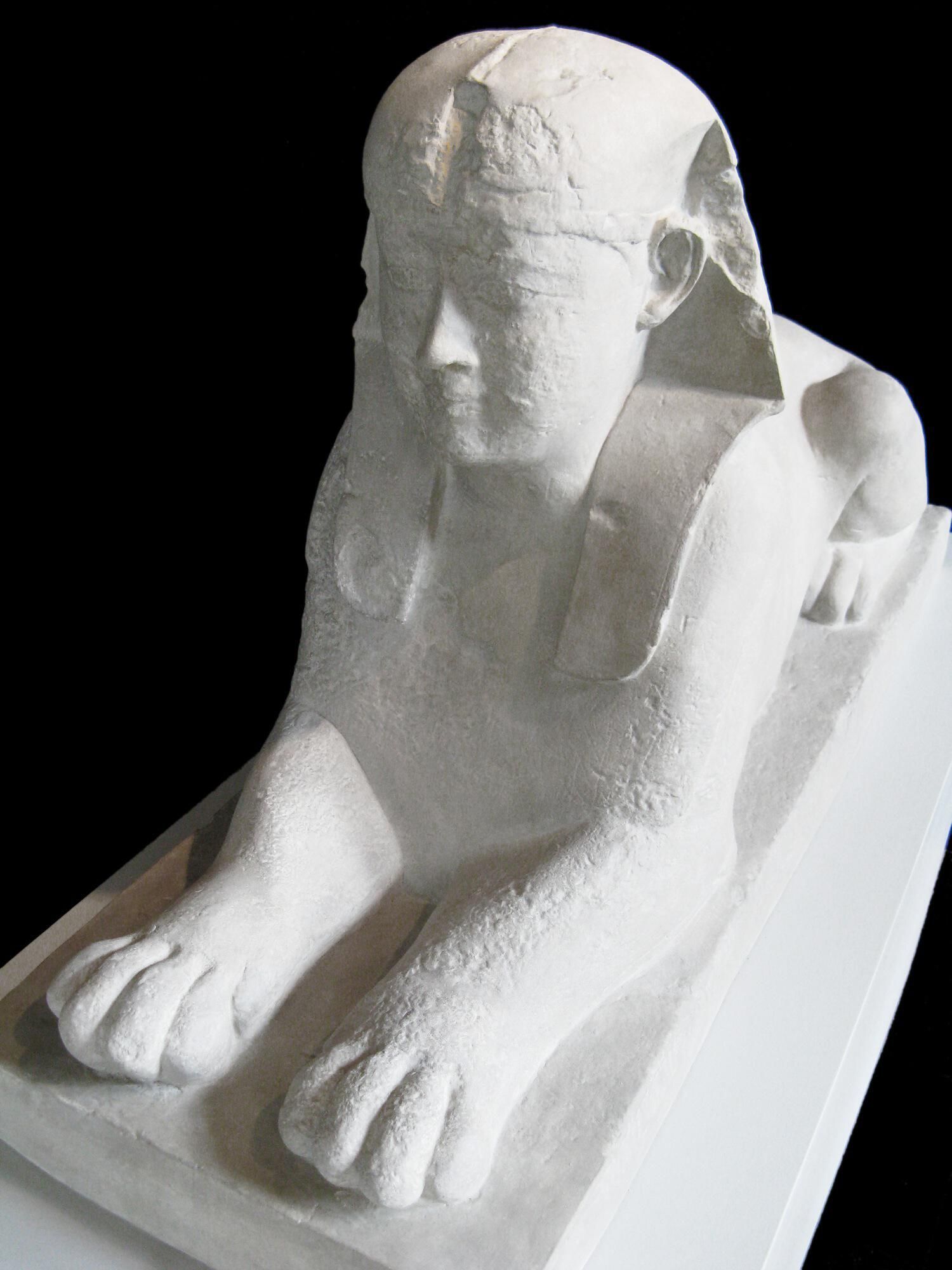Sphinx
Name/Title
SphinxEntry/Object ID
08EG12127Description
Reclining sphinx. The body is of a lion and it is in resting position. The head is pharaonic and is looking forward.Type of Sculpture
StatueArtwork Details
Medium
Limestone, PlasterContext
This statue is a copy of one of the sphinxes that lined the Sacred Way to the Serapeum at Saqqara. The Saqqara Serapeum is a series of catacombs northwest of the Step Pyramid of Djoser. The Serapeum was the home of the cult of the Apis Bull (see: Head of an Apis Bull) and the later syncretic god Serapis and contains many massive granite sarcophagi for the bulls. The catacombs date back at least as early as the eighteenth dynasty and continued to be in use until the Ptolemaic Period. However, the sphinxes appear to be from the third or fourth centuries BC, which correspond to the Late Egyptian Period. Symbolizing royal power, wisdom and strength, sphinxes were tomb guardians. They are, almost without exception, represented as male and with the body of a lion. For example, the great Sphinx at Giza has the body of a lion and the head of Khafre, king of Egypt from about 2258-2532 BC.Made/Created
Date made
400 BCE - 200 BCETime Period
ClassicalEthnography
Culture/Tribe
Egyptian

